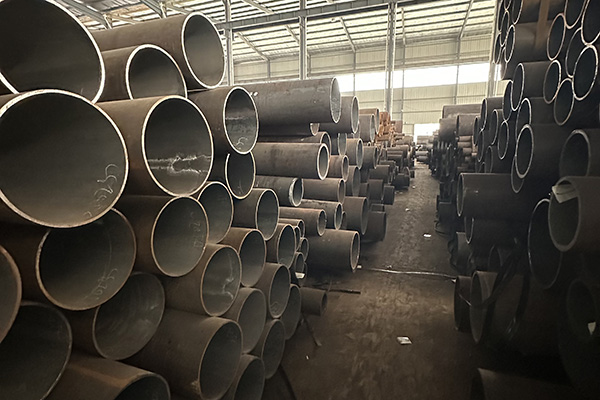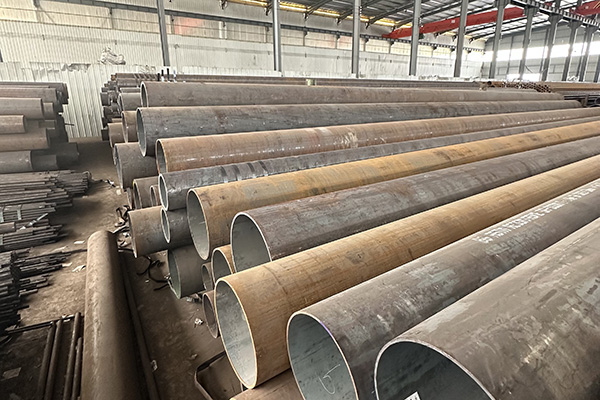
Ensuring Safety in Harsh Environments
Modern energy, refinery, and chemical industries face one constant challenge: equipment must perform safely even when exposed to freezing or cryogenic conditions. At the heart of these systems, the low temperature alloy steel pipe is indispensable.
Without the right material, pipelines can become brittle, lose impact resistance, and suffer catastrophic failure. That is why international material standards such as API 5L, particularly the X52N grade, are so widely adopted. For large-scale oil and gas operations, choosing a Chinese manufacturer with the ability for bulk supply ensures both quality and consistent availability.

Material Standards: API 5L and X52N
What API 5L Covers
The API 5L specification provides the benchmark for steel pipes used in transporting petroleum, gas, and other fluids. It sets requirements for mechanical properties, toughness, and pressure handling, making it critical for safe and efficient pipelines.
Why X52N Is Chosen
The X52N grade is engineered specifically for reliability at low operating temperatures:
·High mechanical strength for demanding service conditions.
·Normalized treatment (N) increases toughness and uniformity.
·Excellent weldability for complex fabrication needs.
·Resistance to brittle fracture, even in sub-zero climates.
These features make API 5L X52N a preferred solution across oil, gas, and LNG infrastructure.
Key Industrial Applications
The versatility of low temperature alloy steel pipes enables their use across multiple industries:
1.Oil & Gas Transmission – Moving crude, refined fuels, and natural gas across long distances in cold regions.
2.LNG Infrastructure – Complementing LNG pipeline alloy pipes in handling cryogenic fluids.
3.Refinery Operations – Piping systems that withstand fluctuating process conditions.
4.Chemical Processing – Safely transporting corrosive or reactive media under low temperatures.
5.Power Plants – Supporting steam, condensate, and cooling systems where reliability is non-negotiable.
Advantages of API 5L X52N Alloy Steel Pipes
·Safety under extreme cold: No risk of sudden brittle fracture.
·Longevity: Strong resistance to erosion and corrosion.
·Operational reliability: Reduced downtime and maintenance costs.
·Global compliance: Meets API 5L, ASTM, and ASME requirements.
·Proven scalability: A China supplier with bulk production capacity demonstrates genuine manufacturing strength.


Inspection and Maintenance Essentials
Even when built to API 5L X52N specifications, continuous monitoring is vital:
·Ultrasonic and radiographic tests help identify micro-defects before they expand.
·Hydrostatic testing validates pressure containment before installation.
·Temperature monitoring prevents failures caused by thermal cycling.
·Certification and traceability guarantee material consistency and project safety compliance.
Why Source from Chinese Manufacturers
When selecting suppliers for large infrastructure projects, Chinese manufacturers provide a distinct edge:
·Experience in producing API 5L X52N low temperature alloy steel pipes.
·Customizable dimensions to meet project specifications.
·Bulk supply availability, reinforcing reliability for high-volume projects.
·Competitive pricing while maintaining rigorous quality standards.
The combination of technical know-how, scalable capacity, and proven quality has made China a preferred hub for sourcing alloy steel pipes.
Conclusion
The low temperature alloy steel pipe remains one of the most critical components for industries that cannot compromise on safety. Its compliance with API 5L X52N standards ensures superior toughness, mechanical strength, and performance in sub-zero environments.
By choosing a trusted China supplier with bulk supply capabilities, companies secure both reliable quality and scalability for global operations. For energy, refinery, chemical, and power sectors, low temperature alloy steel pipes remain the backbone of safe and durable pipeline infrastructure.
References
GB/T 7714:López-Baltazar E, González-Parra R, Barba A, et al. Effects of hydrostatic pressure and temperature on the corrosion behavior of X52 pipeline steel in a simulated deep-sea environment[J]. Discover Electrochemistry, 2025, 2(1): 1-13.
MLA:López-Baltazar, Enrique, et al. "Effects of hydrostatic pressure and temperature on the corrosion behavior of X52 pipeline steel in a simulated deep-sea environment." Discover Electrochemistry 2.1 (2025): 1-13.
APA:López-Baltazar, E., González-Parra, R., Barba, A., & Hernández Gallegos, M. Á. (2025). Effects of hydrostatic pressure and temperature on the corrosion behavior of X52 pipeline steel in a simulated deep-sea environment. Discover Electrochemistry, 2(1), 1-13.





